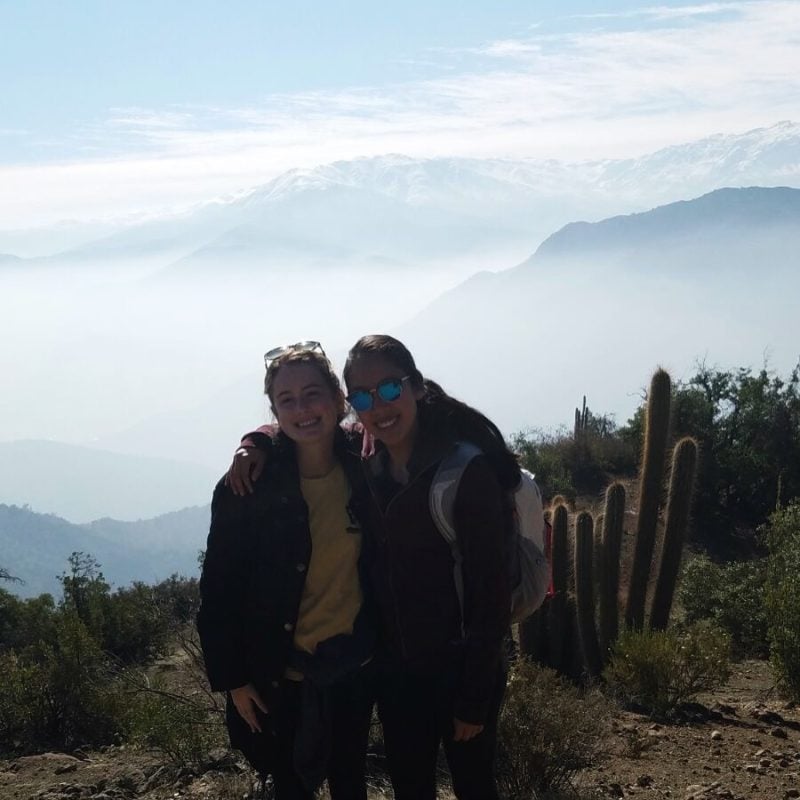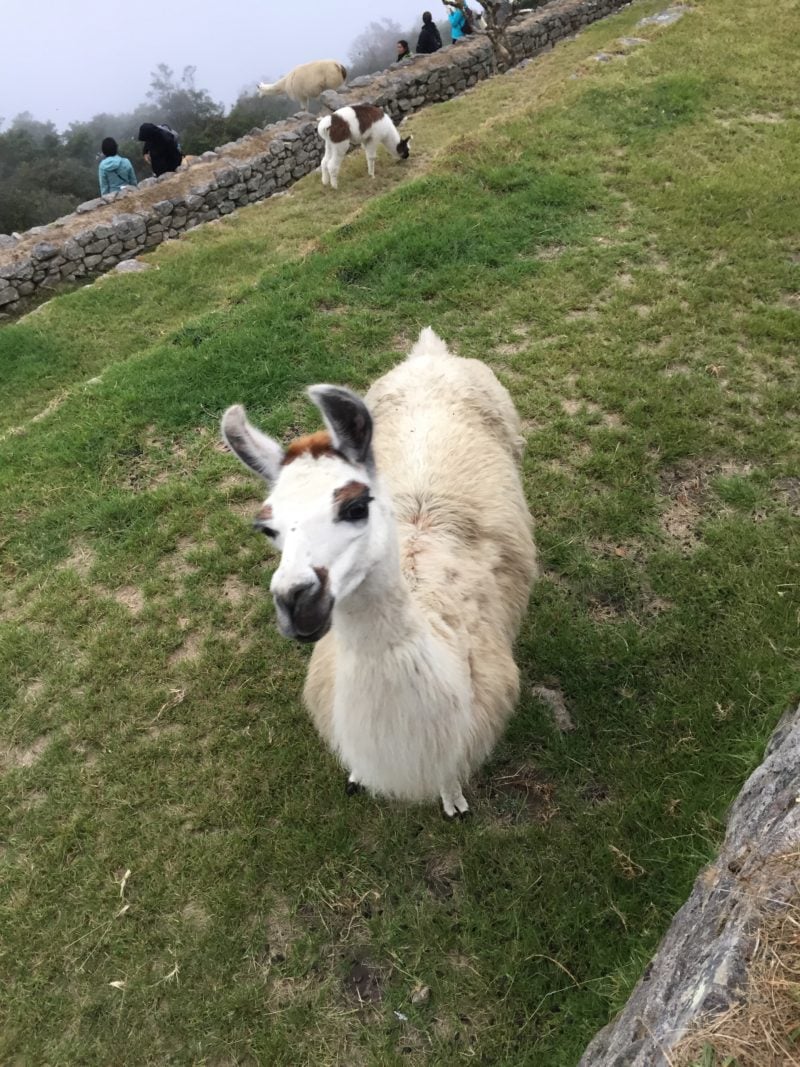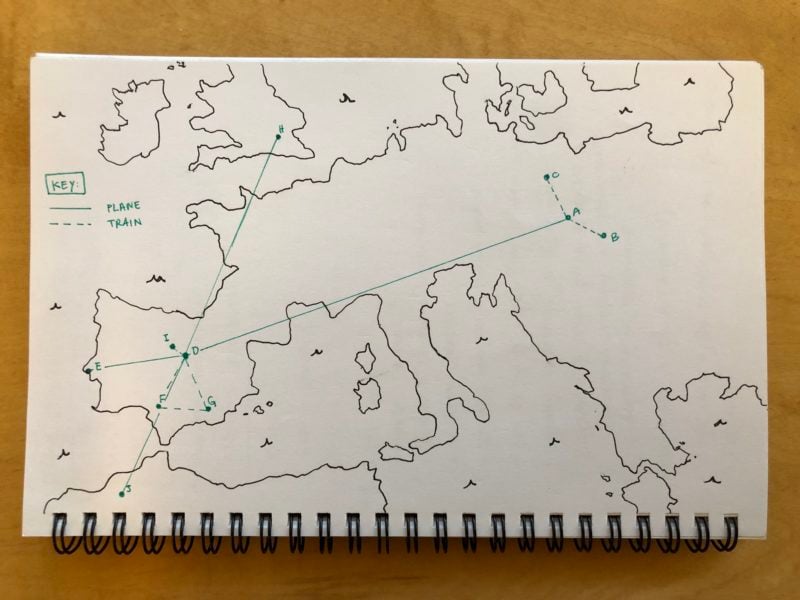Up, Up, and Away by Alexa J. '20
how to get out of the 'tute (temporarily) and out into the world
27,960 miles flown. $0 spent (by me). How? Through purely anecdotal research, I have ascertained that MIT has one of the best global programs of any college that I’ve ever heard of. Name a country, and MIT has a program or grant to get you there. And it’s not just study abroad: there’s also teach abroad, work abroad, research abroad, and more. I figure it’s time to share the wealth, so I’m here to lay out for you all the tips and tricks to getting yourself around the world on MIT’s dime.
Start: 0 mi
+ 10,480 mi MISTI Internship – Santiago, Chile
Fast facts: One of the quintessential global MIT experiences, MISTI, or MIT International Science and Technology Initiatives, sends students to internship and research posts around the world to over 25 countries.
What’s cool: So many things. First, you get work experience, AND you get to travel at the same time. If you ever wanted to try living abroad, this is a good taste test because you can live and work anywhere between 3 months to a year. Most MISTI programs also have a language requirement to prepare you for a serious language immersion. For example, my start-up’s Slack channel and some of their variable names in the code were also in Spanish! Another key point: it’s cost-neutral, which means getting and staying there is FREE. Just to recap, you get another line on your résumé, a language immersion, and free travel and lodging to a foreign country of your choice. That sounds like a win-win-win to me.
Shameless plug: You can read a story from my time here.

me, my housemate, and a snow-covered Andes mountain
+3,080 mi GSL – Lima, Peru 01 I flew from Santiago, in case anyone was actually doing the math.
Fast facts: Global Startup Labs takes a team of business and engineering students to create an incubator program abroad for high school and university students.
What’s cool: 6 weeks at a university abroad, but instead of studying (and doing psets and taking classes) you’re teaching. You do have to develop a curriculum, which also develops an appreciation for your teachers when you realize how hard it is. There aren’t usually language requirements, so all you need is the offline version of the Google Translate app, and you’re good to go.
Of course, there’s also the joy of teaching! At MIT, we see countless posters, emails, and conversations about start-ups, but that culture isn’t as prevalent abroad. It’s incredibly fulfilling to share that mindset and skillset abroad, and also meet some Sloan MBA students while you’re at it.
Shameless plug: Check out the first quarter of this post for more info.

a very pretty llama roaming Machu Picchu
+8960 mi Hackathons a.k.a email opportunities – Moscow, Russia
Fast facts: I don’t really know how this happened but somehow I ended up in Russia at a computer vision hackathon. It seems that often universities or companies want MIT students for competitions, jobs, etc. And they’ll usually help fund your trip there.
What’s cool: The bad thing about having an MIT email address is I get hundreds of emails daily from mailing lists, spam, and the occasional person actually trying to reach me. The good thing is every so often one of those mailing lists results in adventures like this! You never know what opportunities will land on your doorstep, or your inbox in this case, so pro tip: try to read a few of those 30,000 unread emails. For example, a mailing list recently offered a free trip to Mexico, in exchange for a week of teaching, so you never know what you’re going to find.
Shameless plug: The last ¾ of this chronicles our adventures.
+7600 mi GTL – Pavia, Italy
Fast facts: Global Teaching Labs sends MIT students to secondary schools abroad to teach a STEM subject usually in their discipline.
What’s cool: Many GTL locations are in small towns or suburbs, rather than in the city itself, which I think is an even better place to live when travelling abroad. I was in Pavia, a train ride away from Milan, living with two of my students’ families. This meant I spent more time talking and bonding with the Italian people and less time on the touristy stuff, which can get a little exhausting after a month’s worth of European cathedrals and history museums.
You also tend to have more down time with GTL, which I often used to prepare lesson plans (again, you really develop an appreciation for teachers). But I was also able to use my 3-day weekends to travel around northern Italy, and my afternoons to hang out at cute coffee shops. And don’t forget about that cost-neutrality!
Shameless plug: Photo dumps here and here.

Italy’s claims to fame: gelato and a cathedral (jk there’s lots more, like art)
+6800 mi 21G.795 and other IAP Classes – Madrid, Spain
Fast facts: IAP Classes can be for credit or for personal development (or both), and they range from an HIV/AIDS class in South Africa to a Spanish Communication class in Madrid. Mine was the latter. We had around 4 weeks of class in the mornings, 4 days a week, and received 12 units of HASS credit in return.
What’s cool: In many of these classes, you’re still taught by an MIT professor. Your classroom has just been displaced to a foreign country. Like all of these, it’s a win-win-win, in which you get HASS credit (which chips away at those graduation reqs, yay!), there are scholarships that cover some or all of your trip, and you get to acquire. that. knowledge. It’s also working towards my (currently undeclared) Spanish minor, so you know, win-win-win-win.
We had an ambitious amount of traveling planned to take advantage of that cross-Atlantic flight and somehow managed to make all of our 6am flights, despite battling some severe winter allergies. Here’s a map of my wanders.

A: Prague, Czech Republic B: Bratislava, Slovakia C: Berlin, Germany D: Madrid, Spain E: Lisbon, Portugal F: Seville, Spain G: Granada, Spain H: London, UK I: Segovia, Spain J: Marrakech, Morocco
Running total: 27,960
Here are a few other opportunities I’m considering:
+ ??? mi D-Lab
This is another great option for combining classes with travel. These engineering classes focus on real-world problems to develop solutions to global poverty challenges. With emphasis on “real-world,” students get out into the field to test and implement their ideas, usually over IAP.
I have not taken a D-Lab class, so I can’t speak to it too much, although it’s definitely on my list (a list which now has more classes than is possible for me to take before Spring 2020. AH.)
Plug: Here is a good D-lab intro that links to more D-labbers.
+ ??? mi Make your own opportunity!
There are also self-directed opportunities, which is very much in the spirit of MIT. Grants like this and this are extremely flexible, covering most humanities and service-focused endeavors, while some department-specific grants are more structured. I’m hoping to attempt one of these next IAP, so fingers-crossed!
Other programs to look into:
- SMURF – from what I’ve heard, an opportunity to traverse much of Asia
- Do not fear, study abroad is (also) here!
- IAP-specific opportunities like MEMSI for you all you makers and tinkerers
- I’m sure there are some really cool ones I overlooked, so feel free to email me or comment below if you know of others, and I can add them!
Grand total: TBD
- I flew from Santiago, in case anyone was actually doing the math. back to text ↑